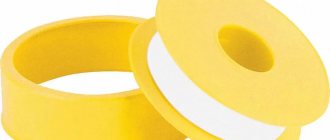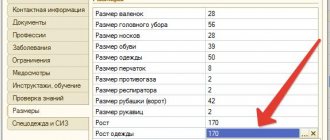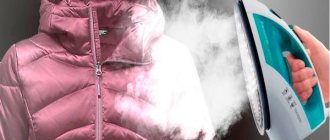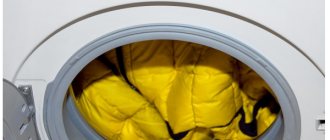The text is presented for informational purposes only. We strongly urge you not to self-medicate. When the first symptoms appear, consult a doctor. We recommend reading: “Why you can’t self-medicate?”
Proper storage of feces for research is an important component of the result. A negative response from a parasitological or bacteriological method of examining a patient may be associated with a violation of the rules for collecting and storing biological material. The patient will not be prescribed the necessary treatment, the clinical picture of the infectious disease will increase, and the quality of life will deteriorate.
Indications for use
Feces are the result of the body's vital activity. When food enters the oral cavity, it travels a long path that ends in the large intestine.
This is where feces are formed. At each stage, many biochemical reactions occur. A qualified specialist, considering solely the appearance of feces, can assess the performance of each organ of the gastrointestinal tract.
Stool testing is commonly used to diagnose gastrointestinal disorders, suspecting the presence of the following problems:
- oncological processes;
- dysbacteriosis;
- haemorrhoids;
- colitis and gastric ulcer;
- pancreatitis;
- cirrhosis;
- polypous formations;
- intestinal infections.
This is not a complete list of diseases. During an initial visit to a gastroenterologist, patients complain of discomfort in the epigastric area, constipation/diarrhea, and bloating. To quickly determine the cause of the disorder, a stool test is prescribed.
It is also actively used in pediatrics. For children, such diagnostics are required for allergies, suspected parasites and other digestive disorders.
Rules for submitting stool for analysis
After the appointment, the doctor must explain to the patient how to correctly collect biological material.
- Immediately before defecation, you need to urinate. Trapped urine may distort the results.
- Pre-washing is not always recommended. If a person has parasite eggs on the sphinketer, they can be easily washed off with water. The result will be false negative.
- It is better not to collect feces directly from the toilet. The flora located on the walls can end up in feces. You should urinate in a clean bag or pot.
- It is recommended to collect feces in a container specially purchased for this purpose. It is sold at the pharmacy and is equipped with a small spatula for ease of use.
- For regular constipation, you can first perform a light intestinal massage. If this is not effective, you will need to do an enema and then collect the fecal pieces from the water.
- For one analysis, 10-15 g of feces is enough.
When sending for analysis, the doctor also indicates what kind of research is needed (coprogram, identification of pathogenic flora, identification of protozoa, etc.). Each option has distinctive features of material collection.
How and where can you store feces for a long time before sending it to the laboratory?
If the doctor has ordered a test, then it is necessary to follow certain rules regarding the storage of feces before they fall into the hands of the laboratory technicians conducting the tests.
Important! The shelf life of the biomaterial is no more than 8 hours.
Here are the basic rules:
Ready-made, reliable, inexpensive and convenient containers will not be difficult to find in the same hospital or in a regular pharmacy. They are opened only before the procedure for collecting material. Such containers are sterilized and dried. It helps to properly preserve the material and protect it from dangerous bacteria.
A spoon is included with the container. It is designed to collect the required amount of feces. After placing the feces in the container, close it tightly with a lid.
Instead of a medical container, a glass jar with a lid is suitable. It must first be washed with soda, scalded with boiling water for sterility and completely dried.
A container previously used for stool cannot be reused. It is also better to avoid plastic utensils.
You cannot store the substance for longer than the specified time, otherwise the biological material will deteriorate and the results will be incorrect.
It is forbidden to keep the material at normal room temperature, as this will lead to its deterioration. The only acceptable place for saving is a refrigerator or balcony. The most suitable conditions for saving are from +4 to +8 degrees.
If you follow these simple recommendations, you will be able to obtain correct, reliable results of laboratory tests.
General analysis (coprogram)
The coprogram helps to assess the functioning of the gastrointestinal tract, identify inflammation, colitis of various origins and other pathologies.
Preparation for the analysis involves avoiding taking medications and using enemas. You also need to adhere to a special diet for 4-5 days. It involves avoiding exotic foods, fruits and vegetables with coloring pigments. These are tomatoes, beets, blueberries.
It is better to collect feces after a night's sleep. If this is not possible, the procedure should be performed in advance. The maximum allowable time before transportation to the laboratory is 8 hours.
In this case, the container with feces must be stored in the refrigerator. You must first urinate and perform genital hygiene. It is recommended to collect feces from different places, avoiding particles of undigested food.
Normal values
| Index | Meaning |
| Macroscopic examination | |
| Consistency | Dense |
| Form | Decorated |
| Color | Brown |
| Smell | fecal, unsharp |
| pH | 6 – 8 |
| Slime | Absent |
| Blood | Absent |
| Leftover undigested food | None |
| Chemical research | |
| Reaction to occult blood | Negative |
| Reaction to protein | Negative |
| Reaction to stercobilin | Positive |
| Reaction to bilirubin | Negative |
| Microscopic examination | |
| Muscle fibers with striations | None |
| Muscle fibers without striations | units in the preparation |
| Connective tissue | Absent |
| Fat neutral | Absent |
| Fatty acid | Absent |
| Fatty acid salts | insignificant amount |
| Digested plant fiber | units in the preparation |
| Undigested plant fiber | units in the preparation |
| Intracellular starch | Absent |
| Extracellular starch | Absent |
| Iodophilic flora is normal | units in the preparation |
| Pathological iodophilic flora | Absent |
| Crystals | None |
| Slime | Absent |
| Columnar epithelium | Absent |
| Epithelium is flat | Absent |
| Leukocytes | None |
| Red blood cells | None |
| Protozoa | None |
| Worm eggs | None |
| Yeast mushrooms | None |
Protozoa and helminth eggs
Testing for protozoa and helminth eggs is recommended for frequently ill children and people who have animals at home.
You can only hope for an accurate result if all preparation conditions are met. It is not advisable to carry out hygiene procedures before analysis. After the procedure, the sample must be submitted for examination within 12 hours.
Modern laboratories perform the test on the day of delivery; in exceptional cases, the result becomes known only the next day. The analysis is valid for 10 days.
Bacteriology
Stool culture is recommended if there is a suspicion of the presence of certain groups of bacteria and helminths in the body. The procedure has no restrictions. It is performed regardless of age and health status.
There are 2 options for taking the test: self-emptying your bowels and collecting material from a health care worker. In the second case, the specialist uses tampons and loops.
The patient lies on his side on the couch and spreads his buttocks. At a depth of approximately 10 cm, the healthcare worker inserts a loop into the anus, through which material is collected from the intestinal walls.
It is possible to defeat parasites!
Antiparasitic Complex® - Reliable and safe removal of parasites in 21 days!
- The composition includes only natural ingredients;
- Does not cause side effects;
- Absolutely safe;
- Protects the liver, heart, lungs, stomach, skin from parasites;
- Removes waste products of parasites from the body.
- Effectively destroys most types of helminths in 21 days.
There is now a preferential program for free packaging. Read expert opinion.
Read further:
Why take an enterobiasis test for a swimming pool certificate: rules, deadlines and instructions
Worms during pregnancy: what to do in the early stages, effects on the fetus, how to treat
Who do viruses belong to: bacteria or intracellular parasites?
At what temperature do the eggs of worms (roundworms) and pinworms die?
Cucurbitin: what products contain it and which one has an effect on worms
How long do worms live in the human body and in the external environment, the life cycle of helminths
PCR studies
Examination of feces using the PCR (polymerase chain reaction) method guarantees reliable results. It is used to detect cells of certain pathogenic microbes and identify their varieties. Recommended if you suspect the presence of parasites in the body. It could be Helicobacter pylori, Giardia, Ascaris.
Preparation for the analysis does not have any specific features (following a diet, avoiding medications). It is recommended to collect material from several points.
An important advantage of such a study is the rapid result. Within 24 hours, the patient receives an answer about the presence or absence of pathogenic microflora.
Alternative options
If it is not possible to collect fresh stool or store it in the refrigerator, you can use alternative methods of collecting material for research. Instead of using containers, in some cases you can take a scraping from the rectal mucosa, for example, when testing for enterobiasis. The material is collected with a cotton swab and then placed in a closed test tube. The sample is delivered to the laboratory within the next two hours.
Unfortunately, scraping the contents of the rectum does not reveal all diseases of the digestive tract. In some cases, the usual sample collection in a container cannot be avoided. You will receive accurate information about the study from your attending physician.
Read the article about how you can store a urine test
Culture for microflora and sensitivity to antibiotics
The study is carried out to assess the qualitative and/or quantitative composition of fecal microflora. It is also used to identify opportunistic flora and its resistance to antibiotics.
Conditionally pathogenic flora is present in the body of all people. Under the influence of certain factors, microorganisms begin to multiply uncontrollably, provoking the development of diseases. The most common representatives of this group are: Staphylococcus aureus, Klebsiella, Citrobacter, Proteus, yeast-like fungi, Serration.
The material is collected before starting antibiotics. The use of suppositories, oils and laxatives should be avoided. Biomaterial is collected only under the condition of spontaneous emptying.
If the number of opportunistic microorganisms during diagnosis is determined to be within normal limits, antibiotic sensitivity testing is not carried out. This is considered inappropriate.
Why do you need to follow the rules?
Many people freeze stool or leave it in the refrigerator for more than 8 hours and get incorrect test results. Why is this happening? During long-term storage, various microorganisms begin to multiply in the collected sample. Some bacteria, on the contrary, die during storage. The chemical properties of the intestinal contents also change. All this ultimately leads to incorrect interpretation of results and incorrect diagnoses.
Violation of the technique for collecting material for dysbacteriosis or identifying specific pathogenic microorganisms can be very critical. Long-term storage and especially freezing of the sample will lead to the inoculation of absolutely incredible combinations of bacteria. In the best case, the doctor will send the patient for a second examination, in the worst case, he will begin the wrong treatment. To avoid this, you should follow all the details of collecting material and take into account the peculiarities of storing samples for various studies.
Rules for storing stool before analysis
Before performing the test, you should check with your doctor about how to properly store the container with feces. Recommendations may vary depending on the initial diagnostic goals. It is often possible to collect material in the evening.
If a coprogram is required, you should have a bowel movement in the morning and immediately take the feces for examination. You can also do this in the evening by placing the container with the material in the refrigerator on the main shelf. If stored on the door or in the freezer, the result will be distorted. The maximum allowable time between defecation and transportation is 9 hours.
If testing for helminth eggs is carried out, feces can be stored in the refrigerator. It will be necessary to additionally use preservative components. They must be taken from the laboratory assistant in advance. It is better to deliver the material as soon as possible. Otherwise, the enzymes present in the excrement will destroy the helminths.
What you need to know
In order for the study to show reliable information and not have to be repeated, before collecting biomaterial it is necessary to understand how to carry it out correctly and under what conditions to store feces for analysis. Experts warn that the requirements depend on which test is prescribed for the patient.
When issuing a referral, the doctor must explain in detail what rules need to be followed, whether the biomaterial can be stored in the refrigerator, at what temperature and for how long. If the patient has the opportunity, it is better to take the stool to the laboratory immediately after the morning bowel movement.
This is due to the fact that by studying a fresh sample, you can obtain the maximum amount of information. If emptying occurred in the evening, and the biomaterial needs to be delivered to the medical center in the morning, it can only be stored in the refrigerator. If the patient is scheduled for a biochemical study, the biomaterial may be stored in the freezer.











